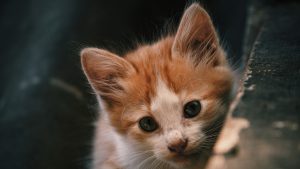Cats seem to groom themselves all the time. But even the cleanest feline can succumb to a number of these common health issues.
Fleas
Fleas are a really common health issue for cats also as dogs. Fleas can relive a year and cause anemia in your cat if left untreated. they need some specific signs and are one among the simplest issues to treat. There are several treatment options including powders, foams, topical medication and oral medication. consult your vet on the simplest choice for your pet. Here are some signs your cat has fleas.
• Constant scratching
• Irritated red skin
• Hair loss
• Frequent licking
• Flea dirt on their skin which seems like little black dots
• Hot spots or infections
Vomiting
Vomiting is extremely common with cats thanks to many causes. It might be from eating something poisonous or inedible like ribbon, hairballs, an infection, diabetes or tract disease. apart from the standard symptoms, it can include include abdominal heaving and drooling. Vomiting can dehydrate your cat rather quickly so call you vet if your feline acts ill or continues to vomit. Your vet may request a sample so be prepared to require one along.
FLUTD – Feline Lower tract Disease
Vets estimate that as many as 3% of the cats they see have FLUTD. Feline lower tract disease is really a gaggle of disease with many causes. Both male and feminine cats are in danger to contract FLUTD and is common in cats that are overweight, unfit or generally only eat dry food. Other contributing factors are often stress, sudden changes to their lifestyle, and even multiple cats within the homes. Treatments are supported the sort of FLUTD that your cat has. If you think that you cat may have FLUTD, contact your vet immediately. If your cat can’t urinate, there’s definitely a drag . Here are some symptoms to observe for.
• Bloody urine
• Urinating in unusual places
• Straining to urinate
• Dehydration
• Lack of appetite
• Crying while urinating
• Continuous licking of the urinary area
• Vomiting
Tapeworms
Tapeworms are common in cats. Cats usually get tapeworms as a results of swallowing a flea. They sleep in the cat’s intestine and may get older to 2 feet. While they will grow rather large, they’re segmented and typically break apart when expelled. you’ll usually just see segments of the tapeworm instead of an entire worm. the simplest thanks to see if your cat has tapeworms is their check their feces, anus or bedding. you’ll see Pieris rapae worms, that appear as if grains of rice. The worms usually begin when your cat relaxes or sleeps. These are the simplest times to see for signs. Vomiting and weight loss are symptoms but repeatedly it’s hard to inform if they’re infected. There are different treatment options available that include injections, oral or topical medications.
Diarrhea
There are many reasons why your cat can have diarrhea including spoiled food, allergies, parasites, disease , infection and even cancer. It can last anywhere from each day to many months. If your feline has diarrhea, make certain to supply many water to assist prevent dehydration. Removing their food for up to 24 hours may help reduce the length of the episode. If you see vomiting, fever, lethargy, dark or bloody stool or loss of appetite, consult your vet immediately.
Eye Problems
There are often multiple causes for eye problems in cats. Viruses, trauma, conjunctivitis, glaucoma, cataracts, retinal disease, and inflammation are the foremost common. Here are some symptoms that there could also be a drag .
• Squinting
• Watery eyes
• Cloudiness
• Tear-stained fur
• Gunk within the corner of their eye
• Red or white eyelid lining
• Pawing at their eye
• Visible nictitating membrane
If you don’t know what’s causing your cat’s eye issues, make certain to treat it as an emergency and call your vet for a meeting .
Maintaining your cat’s health is a crucial a part of pet ownership. make certain to consult your vet whenever you’ve got questions on their behavior.




















